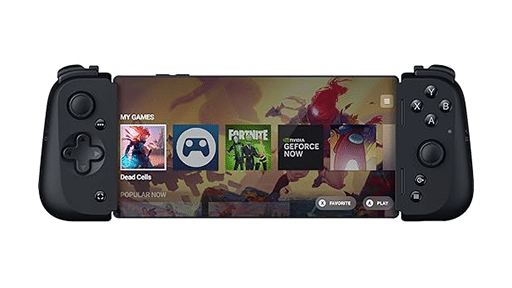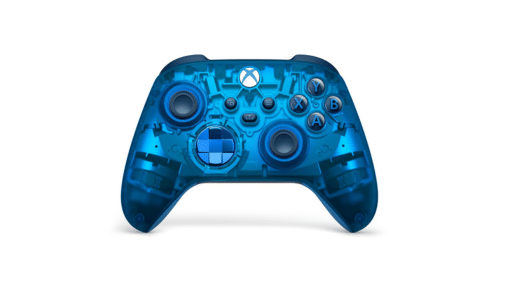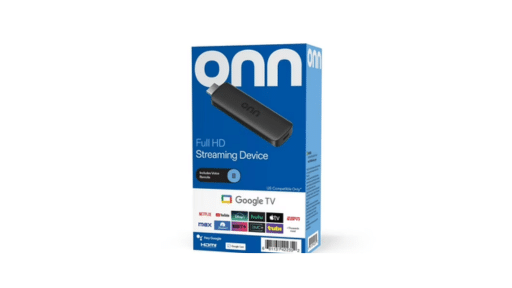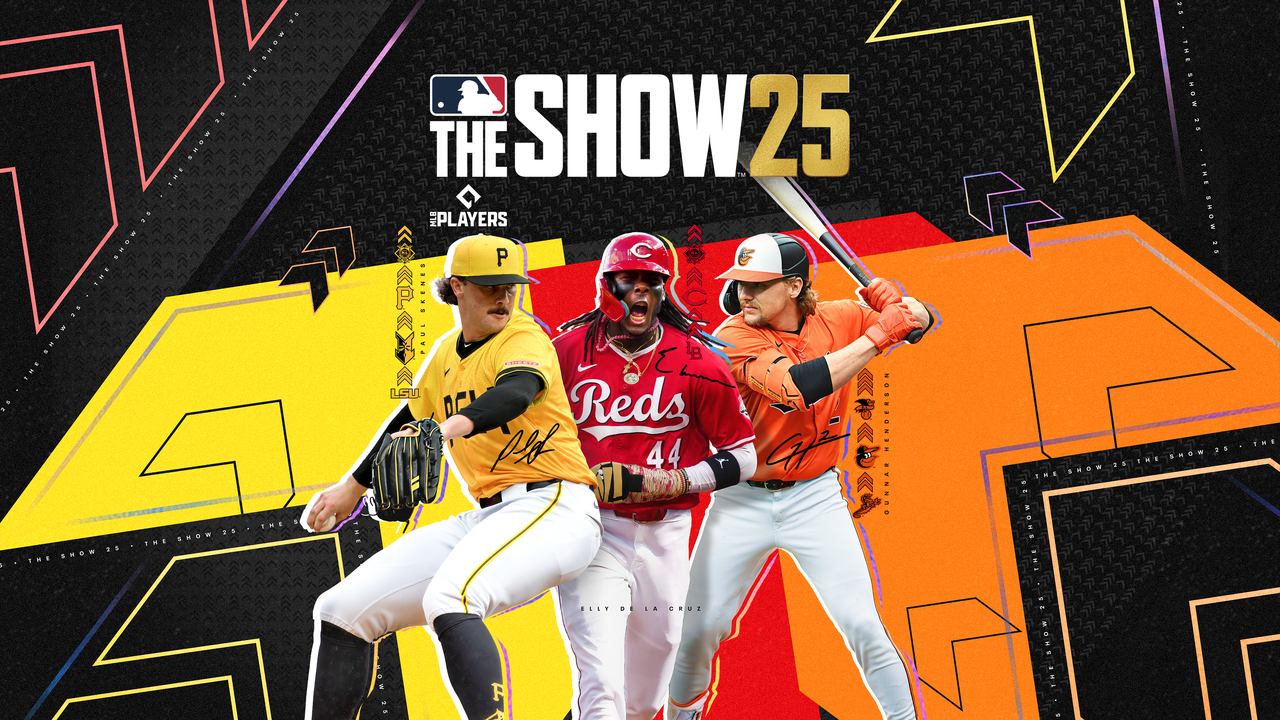
Every year, sports games try to balance new features with familiar gameplay mechanics, tweaking gameplay just enough to justify another installment. MLB The Show 25 follows this tradition, offering refinements over reinvention.
Developed by San Diego Studio, this year marks the franchise’s 20th anniversary, bringing small but meaningful upgrades to core modes. Road to the Show now includes high school and college, hitting sees a new Ambush Hitting mechanic, and Diamond Dynasty removes Sets & Seasons for a more flexible progression system. Franchise Mode also gets a Free Agency overhaul, while general gameplay tweaks aim to improve realism in batting, pitching, and fielding.
Does this year’s game bring enough changes to feel fresh, or is it another small step rather than a leap forward? Let’s break it down.
Gameplay Tweaks That Make a Big Difference
If you’ve played MLB The Show before, you’ll feel right at home with this year’s gameplay. MLB The Show 25 sticks to the same core formula but tightens things up in ways that make each game feel smoother and more natural.
One of the biggest tweaks is Ambush Hitting, which rewards you for predicting where a pitch will land. If you guess right, you’ll make better contact. If you guess wrong, well… let’s just say I’ve swung at my fair share of ugly sliders in the dirt. It’s a small adjustment, but it makes you think more about pitch sequencing and timing instead of just reacting to everything thrown your way.
Fielding has also been cleaned up. Defensive plays feel snappier, and the new throw accuracy meter makes a difference—bad timing leads to wild throws, which cost me more than a few runs early on. There’s also a first-person fielding camera, which lets you track plays from the perspective of a defender. It sounds cool, but after a few innings of feeling disoriented, I happily switched back to the regular view.
Pitching feels largely the same, but AI batters are much better at recognizing patterns. Try to sneak in too many fastballs, and they’ll start punishing you. I learned that the hard way when the CPU sent back-to-back homers over the fence after I got lazy with my pitch selection. This makes games feel less predictable, forcing you to mix up your approach instead of relying on the same strategies every game.
None of these changes overhaul MLB The Show 25, but they do make each moment feel a little more precise, a little more rewarding, and a little less frustrating when things don’t go your way.
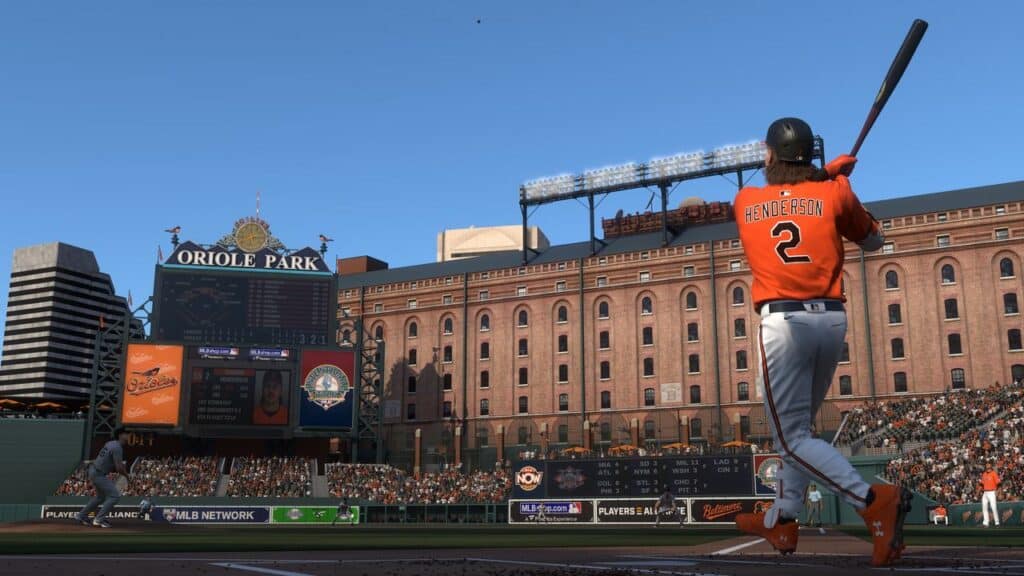
Expanded Road to the Show Brings High School and College Play
Road to the Show has always been about building your own path to the majors, and this year’s version starts even earlier. Instead of diving straight into the minor leagues, you’ll begin in high school, playing showcase games before moving on to a short college career. These games affect your draft stock, making early performances more meaningful than before.
At first, I liked the idea of starting my career in high school, but after a few games, it felt more like a quick intro than a full-fledged journey. The college phase adds a bit more depth, but I found myself wanting just a little more—more games, more decisions, maybe even a full season to develop my player before the draft.
That said, it does help make Road to the Show feel more like a full career rather than just a fast track to the pros. The experience is still focused on your player’s individual growth, with a revamped progression system that lets you fine-tune your attributes more naturally over time.
It’s not a huge transformation, but for anyone who spends countless hours grinding their way to the majors, these small changes make the journey feel a little more involved.
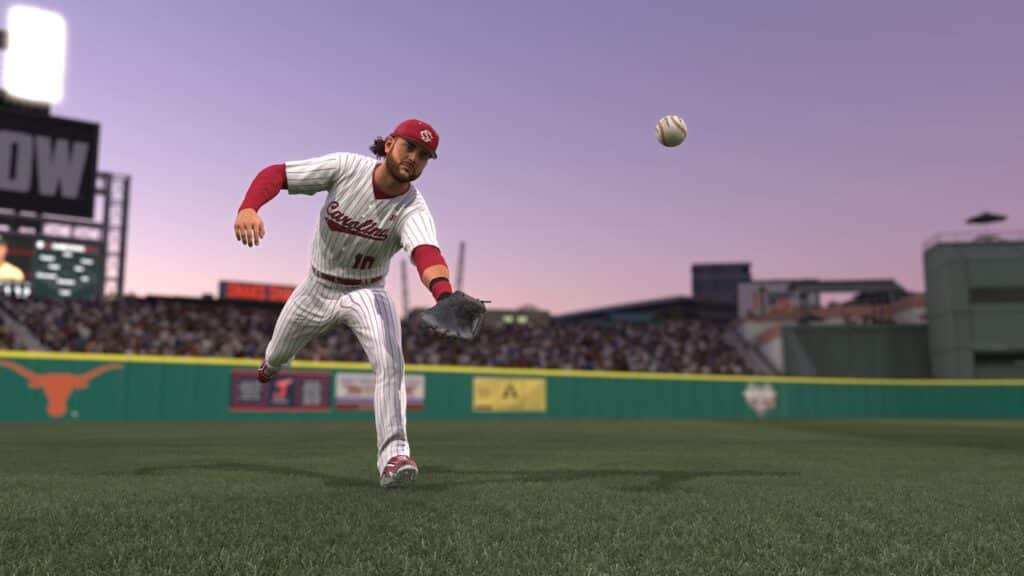
Diamond Dynasty Gets a Long-Overdue Fix
Diamond Dynasty has always been about building your dream team, but last year’s Sets & Seasons system forced you to start over every few months. That’s gone now. You can finally keep your best cards all year, making team-building more rewarding and less frustrating.
I can’t overstate how much better this feels. Before, it felt like grinding for nothing, knowing my top players would eventually become useless. Now, every card I earn actually matters, making it easier to commit to long-term team building.
There are also two new ways to play:
- Diamond Quest is a roguelike-inspired mode where each game presents randomized rewards and challenges. It’s different from anything else in the mode, and I actually found myself coming back to it more than expected.
- Weekend Classic is a high-stakes multiplayer mode with exclusive rewards for top performers. It’s perfect for competitive players who want better prizes without committing to a full Ranked season.
Outside of that, not much else has changed. You’ll still be grinding, collecting, and competing, just with more freedom than before. If you love Diamond Dynasty, this year feels more flexible and rewarding. If you’re not into the card-collecting grind, this won’t change your mind.
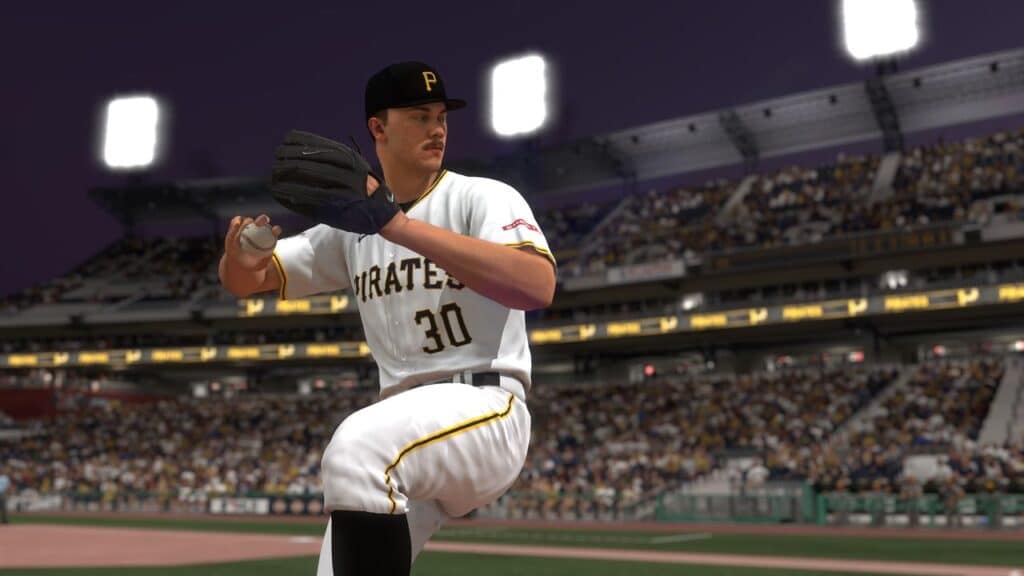
Smarter AI, Sharper Fielding, and a Brutal New Challenge
MLB The Show 25 doesn’t reinvent how the game plays, but the little refinements add up. The AI feels smarter, fielding is more responsive, and if you’re looking for pure punishment, the new G.O.A.T. difficulty is waiting to crush you.
Let’s start with AI improvements. CPU-controlled teams finally feel more intelligent, especially on the basepaths. Runners take smarter risks, and I saw fewer cheap outs from bad baserunning decisions. Meanwhile, AI batters don’t fall for the same pitch sequences anymore. I used to rely on high fastballs followed by low off-speed pitches to get strikeouts, but now? The CPU actually adjusts, forcing me to mix up my approach.
Fielding has also tightened up. Reaction times feel quicker, tagging animations look smoother, and the throw accuracy meter now makes bad throws way riskier. I learned this the hard way when I rushed a throw to first and sent the ball sailing into the stands, handing the opponent an extra base. If you’re careless, the game will punish you.
Then there’s G.O.A.T. difficulty. I gave it a shot, thinking I could handle it. Big mistake. The AI rarely swings at bad pitches, timing windows are brutally small, and if you slip up on defense, expect the CPU to capitalize instantly. Within a few innings, I was down five runs and wondering what I had done to deserve this. If you want the ultimate challenge, this is it—but for most of us, Legend difficulty is already tough enough.
These aren’t game-changing upgrades, but they do make a difference. Whether you’re batting, pitching, or fielding, things feel just a little bit sharper.
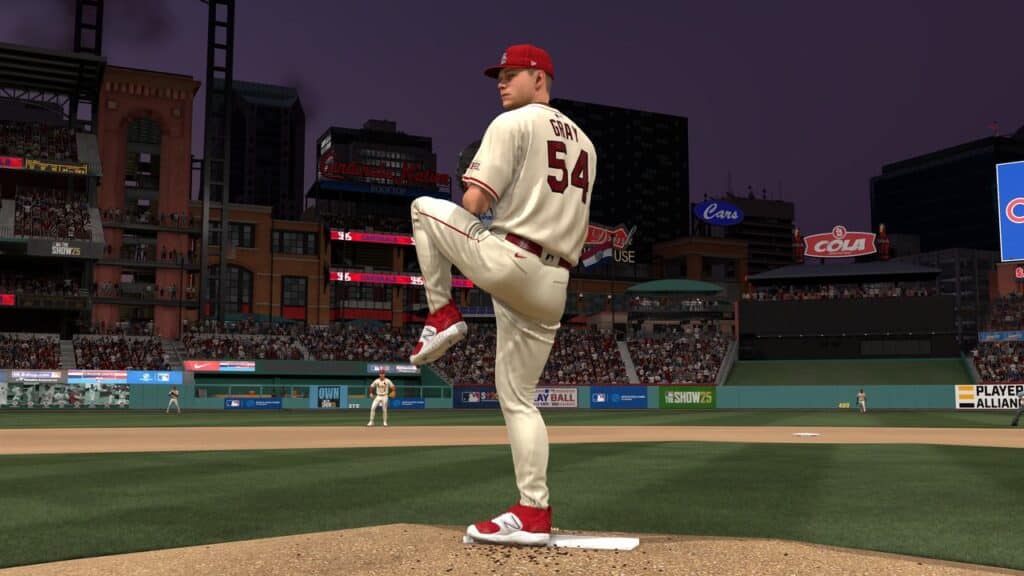
Small Enhancements to Visuals
At a glance, MLB The Show 25 looks great, but if you were hoping for a massive graphical upgrade, you won’t find it here.
Stadiums and player models are a little sharper, and lighting has improved, especially during night games. The day-night transitions feel more natural, and stadium lights add more depth to evening matchups. It’s subtle, but if you’ve spent enough time with the series, you’ll notice it.
Animations also feel smoother, especially in fielding and batting stances. I saw fewer awkward transitions between movements, which makes everything flow better. That said, crowd details still leave a lot to be desired. If you actually pay attention to the stands, you’ll notice low-detail spectators that feel out of place compared to everything else.
A new first-person fielding camera shakes things up, letting you track plays from a defender’s point of view. It’s a cool idea, but in practice, it’s more of a novelty than something I’d actually use. After trying it a few times, I switched back to the traditional camera angles—they’re just more practical.
Broadcast presentation also gets minor refinements, with new camera angles and smoother cutscenes. Commentary has a few new lines, but after enough games, the repetition starts to show again.
Overall, MLB The Show 25 looks slightly better than last year, but it’s not a huge leap forward. If you were expecting a major visual overhaul, this year’s changes are more about small refinements than anything groundbreaking.
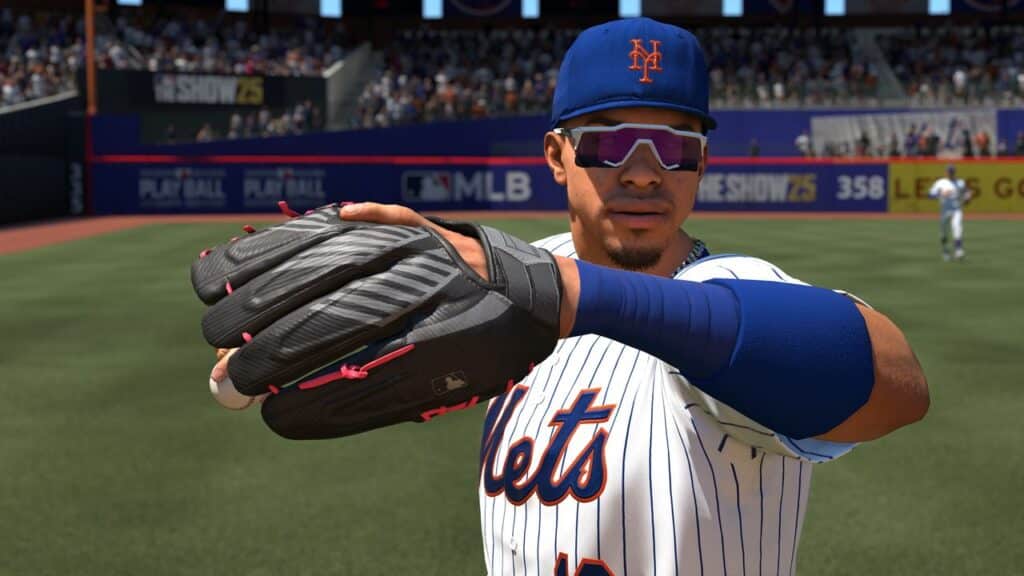
A Familiar Multiplayer Experience with a Few New Twists
Multiplayer is where MLB The Show 25 continues to shine, but if you’re hoping for a total overhaul, you might be a bit disappointed. The core multiplayer modes haven’t changed much from last year, but a few tweaks here and there keep things interesting.
Diamond Dynasty gets a couple of new sub-modes that give you more ways to play. Diamond Quest introduces a roguelike element, where you progress through randomized challenges to earn rewards. It adds some variety, but at the end of the day, it still boils down to building your dream team and grinding for better cards.
Then there’s Weekend Classic, a high-stakes competitive mode with exclusive rewards for top players. It’s fun, especially if you like ranked play, but if you’re not into the grind of earning rewards, it might not pull you in for long.
Beyond these two modes, everything else feels familiar—standard online matches, co-op play, and the usual ranked and casual modes. Online matchmaking remains solid, with minimal lag and support for up to eight players in online games. Local multiplayer is still capped at four players, which is plenty of fun for friends or family looking to play together.
One thing that is still missing is Online Franchise Mode, which has been a request from fans for years. If you’re someone who’s looking for a deeper online management experience, you’ll still have to look elsewhere.
All in all, the multiplayer experience in MLB The Show 25 is solid and enjoyable, but it’s still grounded in the same core gameplay we’ve seen in recent years. If you’ve played past titles, you’ll know exactly what to expect, just with a few new ways to grind out rewards and compete.
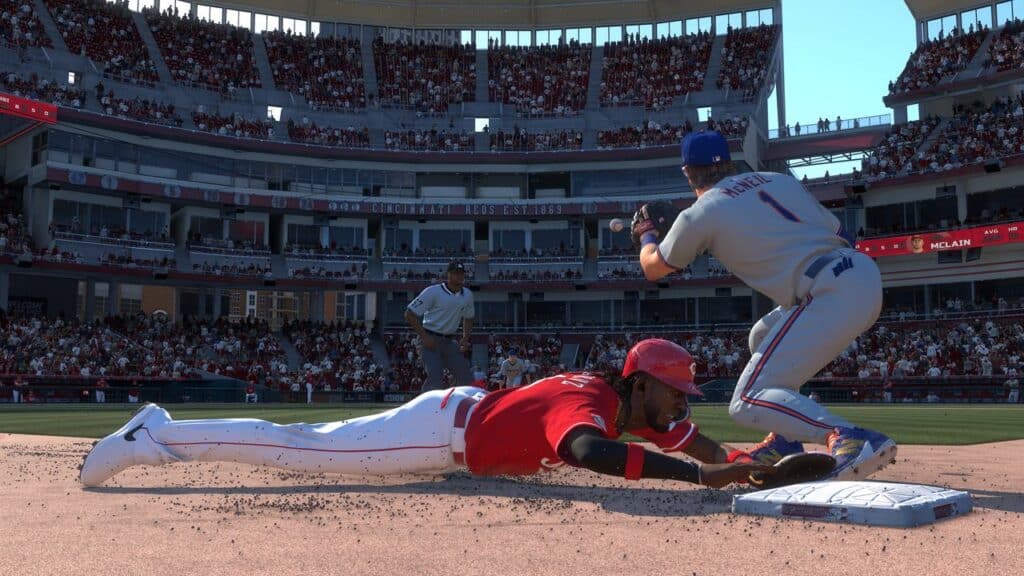
MLB The Show 25 Delivers Small Yet Meaningful Updates
MLB The Show 25 isn’t a major overhaul, but it tightens up what already works. This year’s changes, like the expanded Road to the Show and the removal of Sets & Seasons in Diamond Dynasty, make the game feel fresh, even if it’s not radically different.
If you’ve played MLB The Show before, you’ll appreciate the small refinements. The Road to the Show journey, starting in high school and college, is an interesting addition, though I would have liked more depth. Ambush Hitting adds an extra layer of strategy, but I found myself guessing wrong more often than I’d like.
Diamond Dynasty has seen the biggest shift with the removal of Sets & Seasons, allowing for a more flexible progression system. The new modes, Diamond Quest and Weekend Classic, bring something new, but the core formula remains the same. Franchise Mode still feels a little stale and in need of a bigger update.
Gameplay is smooth, with improved fielding and AI behaviour that’s more intelligent. The new G.O.A.T. difficulty offers a real challenge, but it’s not for the faint of heart. Visually, the game looks sharp with improved lighting and animations, though it’s not a massive leap from last year.
Overall, MLB The Show 25 is solid. It’s not revolutionary, but it delivers a polished, satisfying experience. If you’ve skipped a year or two, it’s a great time to jump in. For long-time fans, the small tweaks are appreciated, but you might find yourself wishing for more.
MLB The Show 25

Summary
MLB The Show 25 makes some smart gameplay tweaks, like Ambush Hitting and a better Diamond Dynasty. The visuals are sharper, but the upgrades aren’t huge. The smarter AI and tougher challenge keep things interesting, though long-time fans might not find anything groundbreaking. Overall, it’s a solid, polished baseball game.
As always, remember to follow us on our social media platforms (e.g., Threads, X (Twitter), Bluesky, YouTube, and Facebook) to stay up-to-date with the latest news. This website contains affiliate links. We may receive a commission when you click on these links and make a purchase, at no extra cost to you. We are an independent site, and the opinions expressed here are our own.


